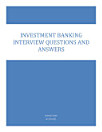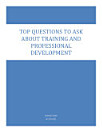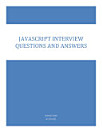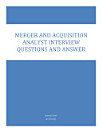Trading Interview Questions and Answers - English
Om denne e-bog
General Trading Questions
1. Why do you want to be a trader?
Answer:
I enjoy working in fast-paced environments where quick decision-making is crucial.
Trading aligns with my analytical mindset and interest in financial markets.
I am driven by the challenge of analysing data, identifying patterns, and taking calculated risks.
2. What skills make a good trader?
Answer:
Strong analytical and quantitative skills.
Discipline and emotional control under pressure.
Ability to make quick decisions based on incomplete information.
Risk management and adaptability to changing market conditions.
Technical Questions
3. What is the difference between bid and ask prices?
Answer:
The bid price is the highest price a buyer is willing to pay for a security.
The ask price is the lowest price a seller is willing to accept.
The difference between the bid and ask is called the spread.
4. Explain market orders vs. limit orders.
Answer:
Market Order: Executes immediately at the current market price. Used when execution speed is more important than price.
Limit Order: Executes only at a specified price or better. It prioritizes price over speed.
5. How do you calculate P&L (Profit and Loss)?
Answer:
P&L = (Selling Price - Purchase Price) × Quantity - Fees and Commissions
Example: If you buy 100 shares at $50 and sell at $55:
(55 - 50) × 100 = $500 profit.
Market and Strategy Questions
6. What is short selling?
Answer:
Short selling is selling a borrowed security with the intention to repurchase it later at a lower price.
Traders profit if the price of the security declines.
7. What is arbitrage?
Answer:
Arbitrage is the simultaneous purchase and sale of the same asset in different markets to exploit price discrepancies for risk-free profit.
8. What is the Sharpe Ratio?
Answer:
The Sharpe Ratio measures the risk-adjusted return of a portfolio.
Formula:
A higher Sharpe Ratio indicates better risk-adjusted performance.
9. How would you hedge a position?
Answer:
Use derivatives such as options or futures to offset risk.
For example, if holding a long stock position, buy a put option to protect against downside risk.
Behavioural Questions
10. How do you handle losses in trading?
Answer:
I focus on maintaining discipline and learning from my mistakes.
I review the trade to understand what went wrong and adjust my strategy accordingly.
I avoid emotional decisions and stick to my risk management plan.
11. How do you stay updated on market trends?
Answer:
I regularly follow financial news through Bloomberg, Reuters, and market research reports.
I use tools like economic calendars to anticipate major market events.
I monitor technical and fundamental indicators.
Quantitative Questions
12. What is the difference between volatility and risk?
Answer:
Volatility measures the magnitude of price fluctuations over time.
Risk refers to the probability of losing capital or failing to achieve expected returns.
13. If you have a stock priced at $100 with an option at a strike price of $105, what would you do?
Answer:
If the option is a call option and the price is below $105, I would not exercise it since it is out of the money.
If the price goes above $105, I will exercise the option to lock in the difference.
14. What is delta in options trading?
Answer:
Delta measures the sensitivity of an option’s price to changes in the price of the underlying asset.
For example, a delta of 0.6 means the option price moves $0.60 for every $1 change in the underlying stock.
Brain Teasers / Problem Solving
15. How many ways can you split a deck of 52 cards into two piles?
Answer:
There are 252 ways to decide whether each card goes into one pile or the other.
Since the piles are unordered, the total is 252/2.
16. If you flip a fair coin 100 times, how many heads do you expect?
Answer:
The expected number of heads = 100 × 0.5 = 50.








